When pumping breast milk how much to feed baby
How much breast milk to express
The amount of breast milk you need to express, and how often you express, will depend on the situation. For example, you may need to express more for your newborn baby if they are unable to breastfeed.
The amount you express for an older baby will depend on the number of times they breastfeed each day.
Important
These amounts are only a guide.
If your baby is born sick or premature, you may not reach this volume.
Any amount that you can express for your baby is helpful. Your midwife, lactation consultant or public health nurse (PHN) can help you.
Expressing breast milk for premature or ill babies
Newborn babies
If you need to express milk for your baby in the early days after birth, here's a guideline on what to expect:
| Day | Milk expressed in 24 hours | How much your baby will get at a feed |
|---|---|---|
| Day Day 1 | Milk expressed in 24 hours 7ml to 123ml | How much your baby will get at a feed from a few drops to 5ml (5ml is approximately 1 teaspoon) |
| Day Day 2 | Milk expressed in 24 hours 44ml to 335ml | How much your baby will get at a feed from 5ml to 15ml |
| Day Day 3 | Milk expressed in 24 hours 98ml to 775ml | How much your baby will get at a feed from 15ml to 30ml |
With time and practice, it will become easier and the amount of milk you express will increase.
How to express breast milk
How much milk a growing baby needs
In exclusively breastfed babies (babies who are fed breast milk only), milk intake increases quickly during the first few weeks of life.
How much milk a baby consumes will change as they get older and grow bigger.
During the first week, most full-term babies take no more than 1 to 2 ounces (30 to 60ml) at feedings. This is because newborns’ stomachs are so small.
After 4 to 5 weeks, babies reach their peak feeding volume of about 3 to 4 ounces (90 to 120ml) and peak daily milk intake of about 30 ounces per day (900ml). This should stay about the same between 1 and 6 months, although it generally increases short-term during growth spurts.
After 6 months, your baby’s milk intake begins to decrease gradually as you introduce solid food.
Expressing for time away from baby
Research tells us that exclusively breastfed babies take in an average of 25 oz (750ml) per day when they are 1 to 6 months old. A typical range of milk intake is 19oz to 30oz (570ml to 900ml) per day.
Use these steps to work out the amount of breast milk your baby will need:
- Estimate the number of times that your baby breastfeeds per day (in 24 hours).
- Divide 25oz (750ml) by the number of breastfeeds.
- This gives you a rough guide for the amount of expressed milk your exclusively breastfed baby will need at one feeding.
For example, if your baby usually breastfeeds around 8 times per day, you can guess that they might need around 3 oz (94ml) of expressed breast milk per feeding.
Breastfeeding - concern about overfeeding
Concern about your breast milk supply
Page last reviewed: 2 May 2022
Next review due: 2 May 2025
This project has received funding from the Government of Ireland’s Sláintecare Integration Fund 2019 under Grant Agreement Number 123.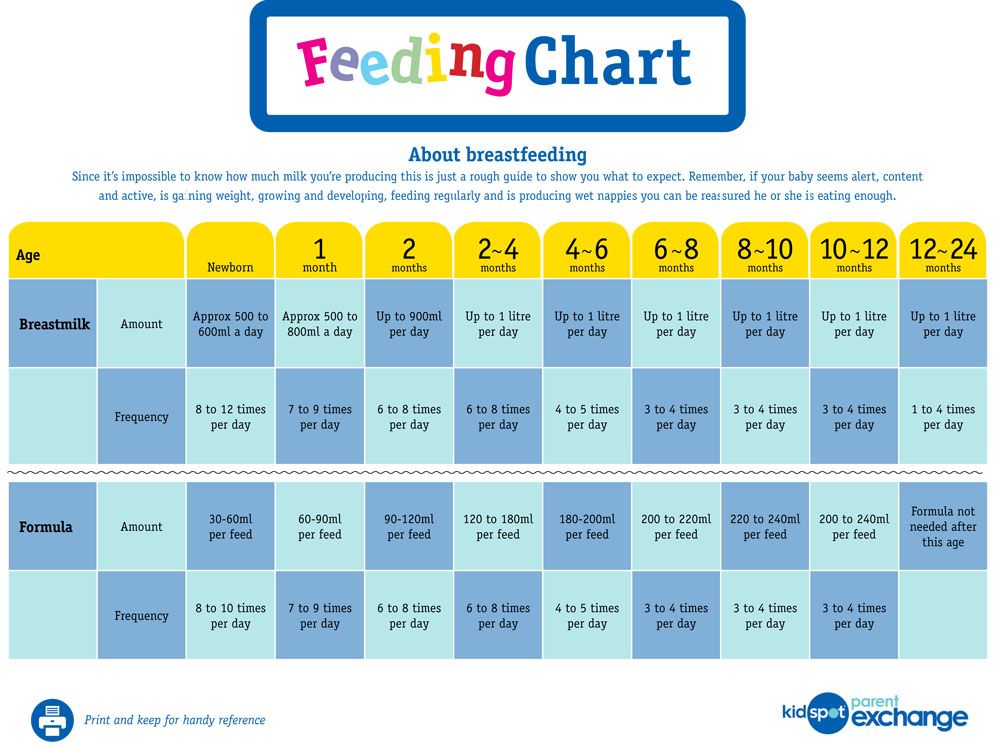
How Much Breast Milk Should I Be Pumping? Chart, Tips, More
Becoming a parent is understandably nerve-wracking. Making sure your baby is getting fed enough (but not too much), sleeping (but only for the right amount of time), and staying healthy (is that diaper rash?) can leave even the calmest of people feeling stressed.
For breastfeeding or chestfeeding parents, knowing how much milk baby is getting can seem like a mystery. In fact, you may find yourself wondering if they are getting enough milk.
Even if you know exactly how much milk they’re getting because you’re pumping and feeding your baby with a bottle, you might worry about the amount and length of your pumping sessions. Are they frequent and long enough to get your baby the milk they need?
To lower your stress levels, we’ve gathered information to help you determine how much milk, on average, you should expect to pump.
We encourage you to speak with your doctor, your midwife, or a lactation expert about your specific situation if you have any questions or concerns.
Keep in mind that everyone is different — and ultimately, if your baby is growing and their pediatrician has no concerns, then chances are you are producing enough.
As babies grow, they need different amounts of milk. Their milk needs also change as you begin to introduce solids.
Every baby is also unique, and their milk needs may look different during periods of cluster feeding. Breastfed or chestfed babies also tend to eat more frequently than formula-fed babies.
Your baby’s stomach size and hunger cues are your best guide to when it’s time to feed them. You can also look out for other cues, such as wet and soiled diapers, to see whether your baby is getting enough milk.
Infants and toddlers present with different cues to let caregivers know they are hungry or full. The Centers for Disease Control and Prevention (CDC) breaks down these cues by age:
| Hunger signals | Signs your baby is full | |
|---|---|---|
| Birth to 5 months | turns head toward bottle or breast; places hands over mouth; puckers or smacks lips; clenches hands; crying (late-stage hunger) | turns head away from bottle or breast; closes mouth; relaxes (unclenches) hands |
| 6 to 23 months | they get excited when they see food; reaches out toward bottle or other food source, or uses other hand motions; opens mouth | closes mouth; pushes bottle or food away, or uses other hand motions to indicate disinterest; turns head away from breast, bottle, or food |
Overall, the goal is to pump enough milk to fulfill your baby’s average daily intake. As your baby grows, their stomach volume will also follow suit.
As your baby grows, their stomach volume will also follow suit.
While the average full-term infant may consume between 450 and 1,200 milliliters (mL) of milk — or 15 to 40 ounces (oz.) per day — it’s also important to consider the average stomach volume of your infant, which gradually increases during their first 4 weeks of life:
| Day 1 | 5–7 mL (0.17–0.24 oz.) |
|---|---|
| Day 3 | 22–27 mL (0.74–0.91 oz.) |
| Day 7 | 45–60 mL (1.5–2 oz.) |
| Day 30 | 80–150 mL (2.7–5 oz.) |
Rather than focusing solely on your baby’s age to determine their milk needs, it’s important to use a combination of their age, body weight, and hunger cues as your guide. Also, while newborns may nurse 8 to 12 times per day, the frequency decreases to about 7 to 9 times per day when your baby is 1 to 2 months old.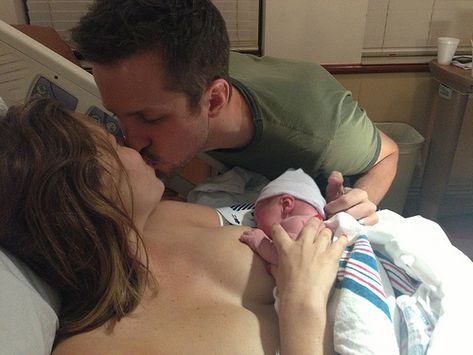
With all that in mind, the number of pumping sessions necessary to meet your milk goals can vary greatly, as can the amount of milk you produce in each session.
What to expect in the first 2 weeks
In the first 2 weeks of baby’s life, you should expect to feed them around 8 to 12 times per day. Your midwife or doctor will likely recommend feeding your little one every 2 to 3 hours.
And yes, that includes overnight. And yes, some babies eat even more frequently than that.
Frequent breast stimulation is important in the first hours, days, and weeks of your baby’s life to help increase breast milk volume. Through frequent sucking, your baby (or pump) helps your breast milk advance from colostrum to mature milk.
This is especially crucial in the first few days after your baby is born.
Getting baby to latch on and feed in the first hour after they’re born and making sure they can nurse 8 to 12 times per 24 hours in the first few days of life are two things that can make a huge difference in your long-term milk production.
Colostrum, the initial liquid produced by your breasts, is present starting around weeks 12 to 16 of pregnancy.
Sometimes it’s called liquid gold because of its yellow color, and because it gives your baby all the nutrients and healthy antibodies they need in the first few days after they’re born. It’s produced in small quantities but offers the perfect nutrition for your newborn.
You can expect your breast milk to change from colostrum to transitional milk around 2 to 5 days after giving birth. Around 10 to 14 days after giving birth, your milk will likely be mature milk.
Your milk may come in more quickly if you’ve had babies before. On the other hand, some people experience a slight delay in their milk coming in. This can be due to several factors, like:
- premature birth
- cesarean delivery, commonly referred to as a C-section
- severe stress
For people who are pumping in the early days and weeks after giving birth, it’s good to know that you will likely produce only a few milliliters of colostrum during each pumping session.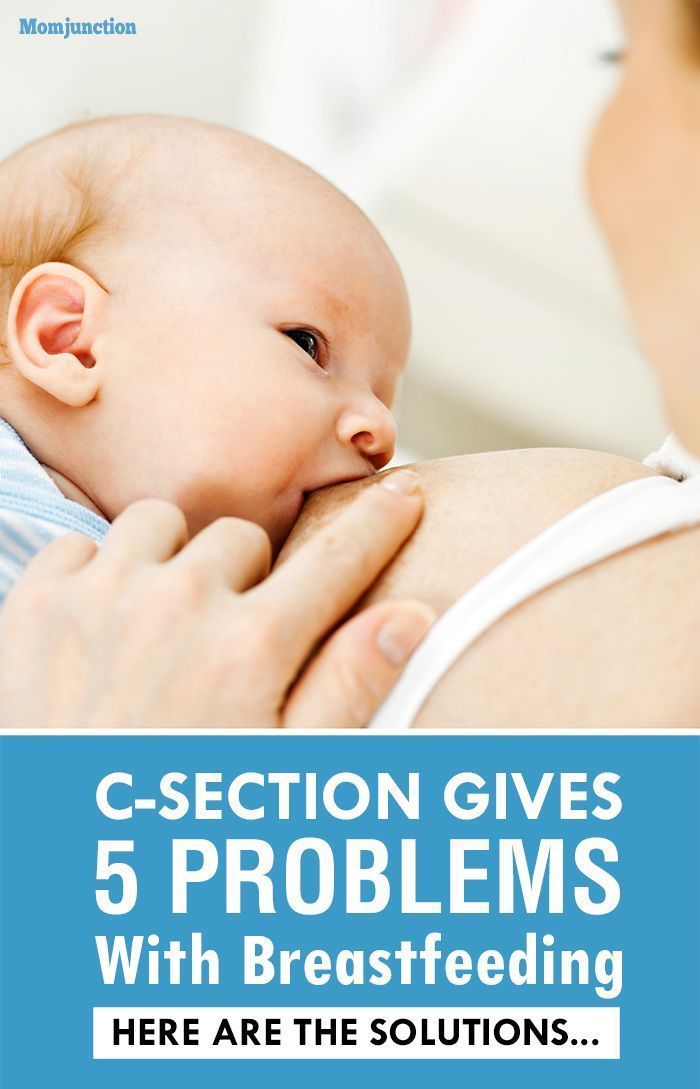 Once your milk comes in, it’s still expected that you’ll pump maybe only an ounce or so at a time.
Once your milk comes in, it’s still expected that you’ll pump maybe only an ounce or so at a time.
What to expect in the first month
After the first couple weeks, you should expect to produce more milk per session, about 2 to 4 oz., and may be able to stretch out some of the overnight feedings (maybe to 4 to 5 hours between feedings). In total, you should expect to average around 8 to 10 sessions per day.
However, cluster feeding may also continue during this time. During periods of cluster feeding, feeding sessions may become shorter and more frequent, and they may also become irregular.
When baby is cluster feeding, they can be extra fussy, sometimes rejecting the nipple only to demand milk a few minutes later. Cluster feeding is your baby’s smart way to tell your body to make more milk, often when they’re getting ready for a growth spurt or developmental leap.
Cluster feeding can be an exhausting and emotional time, but hang in there! It will pass, and things will get easier.
What to expect in the first 2 to 4 months
Around the time baby reaches 2 to 4 months old, the feedings should become more regular, though you may still encounter some periods of cluster feeding or shifts in feedings if they are sick or reaching a new developmental milestone.
Growth spurts are also common at both the 2- and 4-month stages, which may cause your baby to eat more than normal. While every baby is different, it’s important to keep this in mind and to follow their hunger cues.
On average, babies at 4 to 5 weeks old reach their peak maximum daily milk intake of about 900 mL (30 oz.). This means you may expect your baby to drink about 90 to 120 mL (3 to 4 oz.) per feeding session.
Some babies at this age may even need up to 150 mL (5 oz.) per feeding. You might find the exact amount varies by time of day, with some babies nursing more at night.
After this stage, a baby’s daily milk intake doesn’t typically change until around 6 months of age, when they may start eating solids. You can also expect to feed your baby an average of 8 times per day. Every baby has different needs, so you can expect a range of between 4 and 13 feedings every day within the first 6 months.
You can also expect to feed your baby an average of 8 times per day. Every baby has different needs, so you can expect a range of between 4 and 13 feedings every day within the first 6 months.
Remember again, though, every baby is different, so if your baby still feeds more often, that’s likely OK.
If you’re returning to work, you may want to start pumping and storing milk during this time to prepare. Storing milk also makes it easier for other people to jump in and feed your baby, giving you a well-deserved break.
Just remember, when pumping milk after your little one eats, you may not produce as much milk during a pumping session as you would during a feeding session.
What to expect in months 5 and beyond
As your baby begins eating solids — typically at 6 months — you may see a reduction in the number of feeding sessions per day.
That said, some babies take longer to become interested in solids than others. Babies will get the majority of their nutrition from breast milk up to 1 years old, but solid foods can still be introduced after 6 months to aid in their development.
Even after introducing solids, your pediatrician may recommend continuing to breastfeed at a minimum through the first year of your baby’s life. The World Health Organization (WHO) recommends breastfeeding until a baby is at least 2 years old.
If breastfeeding or chestfeeding is not working for you or your baby, discuss other feeding options and recommendations with a lactation specialist, if you have access to one, and your child’s pediatrician.
Ultimately, the best thing for your baby is to ensure they are getting enough nutrients, which can be achieved through breast milk, formula, solids, or a combination of these.
You may choose to exclusively pump, or you may want to do a combination of pumping and breastfeeding. You may even end up choosing to use only formula, and that’s OK, too. There’s no one right answer when it comes to feeding your baby.
Fully emptying your breasts frequently can increase milk production. You may notice that your milk supply increases if you nurse and then pump after a feeding session. You may also notice an increase in milk if you pump or nurse more frequently during the day.
You may also notice an increase in milk if you pump or nurse more frequently during the day.
If you’re exclusively pumping, you’ll want to focus on the amount of milk expressed in a 24-hour period and your breast comfort instead of the amount per pumping session. Ideally, you’ll express at least as much milk as your baby eats in that 24-hour period and pump frequently enough to avoid breast discomfort.
The number of pumping sessions you choose can vary depending on your supply, your comfort, and even your schedule. The amount of extra milk you choose to store is also very personal and may vary, depending on factors like your work schedule, child care options, or upcoming plans.
If you want to store some extra milk, you may wish to do an extra pump session during the day at a time when your baby’s feeding schedule won’t be disrupted. You can also pump for a few minutes after your baby is done feeding.
If you’ve noticed your milk supply decreasing or you just want to increase your current supply, there are many things you can try, including:
- power pumping
- increasing the amount of water your drink
- spending time relaxing skin to skin with your baby
- checking to make sure your pump is properly assembled and working well (make sure to check the size and fit of your breast pump flanges)
- using hand expression to stimulate milk production
- consuming some galactagogues, which are foods and beverages that increase your milk production
Be sure to talk with your doctor before using any medications or supplements to increase milk supply. There are risks associated with overproducing milk.
There are risks associated with overproducing milk.
If you find that your milk supply is steadily declining, you have concerns about your baby’s feeding behavior, your baby is not wetting diapers normally, or your breasts are in pain after pumping sessions, it might be time to seek some assistance.
Many communities offer free (or very low cost) breastfeeding support groups. These groups are typically led by lactation consultants or knowledgeable parents with personal experience breastfeeding.
These support groups offer a chance to ask questions about latching, length and frequency of feeds, and breast discomforts. If you’re interested in connecting with such a group, you can reach out to the nearest La Leche League or check with your doctor, midwife, or local hospital.
An alternative to a support group is a private consultation with a lactation consultant or IBCLC, which refers to someone certified by the International Board of Lactation Consultant Examiners.
These experts may ask questions about your baby, milk supply, pumping, and diet. They may also watch you as you nurse baby or assemble your pump.
They may also watch you as you nurse baby or assemble your pump.
After learning more about your specific situation, you can expect your lactation consultant or IBCLC to offer advice and support, as well as help you develop a plan of action for you and your baby going forward.
There may come a point in your feeding or pumping journey when you start to think about using formula.
Some people choose to feed their baby solely with formula and stop (or never even start) breastfeeding or pumping. Other parents choose to supplement with formula while continuing to offer breast milk.
Many factors can impact your decision to use formula. Some common ones are:
- Your baby is not putting on sufficient weight.
- You experience breast discomfort caused by blisters, sores, or bites.
- It’s a preference — not every parent enjoys breastfeeding, and it’s OK if you feel that way!
- You have less time to pump or breastfeed due to a return to work or other commitments.

The addition of formula can relieve stress if you find yourself worrying about producing enough milk for baby.
If you’re considering introducing formula, it’s often helpful to first discuss it with a lactation consultant or your child’s pediatrician to help you determine the best choice for you and your baby.
Pumping and breastfeeding or chestfeeding are very personal experiences. For some people, it’s possible to let down a great deal of milk quickly, but for others, the process can be frustrating.
It’s typical to worry when you have a newborn, but advice from your midwife, doctor, lactation consultant, or even other people who’ve been there before can help you relax.
If you’re worried about a specific problem or fear that you’re not producing enough milk for your baby, it’s a good idea to reach out to their pediatrician or a lactation consultant.
Feeding with expressed milk | breastfeeding
When can I start breastfeeding my baby with expressed breast milk? How to do it right? Is it worth worrying that the child will confuse the pacifier with the breast? In this article we will answer your questions.
Share this information
When can I start breastfeeding my baby?
If your baby is healthy and breastfeeding well, there is no need to give him expressed milk. For the first four weeks, you work together to start and increase milk production, and your baby also learns to suckle properly at the breast. There is not enough scientific data on this yet, 1 but there is an opinion that bottle feeding in the first month may adversely affect the process of establishing breastfeeding.
However, if the newborn is unable to latch on or suckle for some reason, start expressing milk as soon as possible after delivery. Read more about this in our articles on coping with problems in the first week, breastfeeding premature babies and babies with special needs, and seeking help from your healthcare provider.
How can I feed my baby with expressed breast milk?
There are many expert feeding solutions that allow you to give your baby expressed milk in a variety of ways, depending on your and your baby's needs.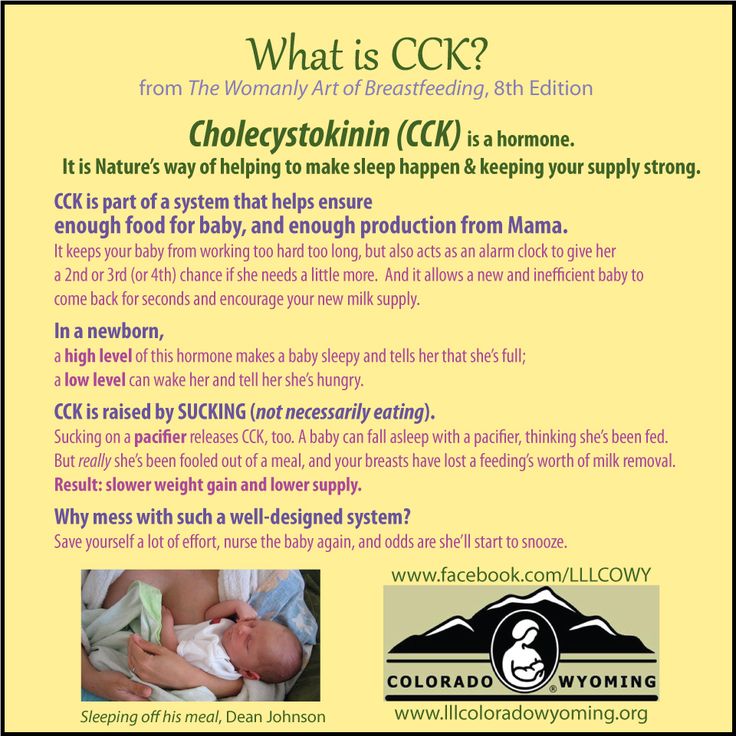
For example, the innovative Calma smart pacifier only lets milk through when the baby creates a vacuum by suckling. This means that when feeding from a bottle, he will make the same movements with his tongue and jaws as when sucking at the breast. 2.3 Calma was developed with the help of breastfeeding experts from the University of Western Australia. When using this pacifier, the baby can suck, swallow, pause and breathe in the same way as when breastfeeding. 4 Preserving natural sucking habits allows baby to transition easily from breast to bottle and back.
In addition, Medela also offers regular bottle teats* in two versions that produce milk at different rates. All Medela* nipples can be placed directly on bottles used for expressing milk, minimizing the risk of spillage.
If you need to feed your baby with expressed milk, but you do not want to bottle feed him until he is learning to breastfeed, you can use a sippy cup* for temporary feeding. The baby will be able to drink milk from such a mug, but you should be careful not to spill the milk. For the first time, it is advisable to feed the child from a drinking cup under the supervision of the attending physician in order to learn how to do it correctly.
The baby will be able to drink milk from such a mug, but you should be careful not to spill the milk. For the first time, it is advisable to feed the child from a drinking cup under the supervision of the attending physician in order to learn how to do it correctly.
If your baby needs to be supplemented with expressed milk in addition to regular breastfeeding, the Supplementary Feeding System (SNS)* can be used. It is equipped with a thin, flexible capillary that can be clipped close to the nipple to give your baby expressed milk while breastfeeding. Thanks to this, the baby suckles the breast for longer, thereby developing sucking skills and stimulating the production of milk from the mother. This can be helpful when there is a shortage of breast milk, as well as when feeding adopted or surrogate children.
If the baby is unable to breastfeed because he is too weak or has a congenital disease, you can use the Special Needs Cup*, which releases milk with gentle pressure, making it suitable for feeding these babies.
How to teach a child to bottle feed?
If breastfeeding is going well and you decide to start bottle feeding your baby with expressed breast milk, follow these guidelines.
Start early and take your time
Don't wait until the first day of work or the first time you leave the house to start bottle feeding your baby. Start accustoming your baby to small portions of expressed milk a couple of weeks before the desired date, calmly and without haste. Gradually build up to one full serving of pumped milk from a bottle.
Choose a time
Ideally, at the first bottle feeding, the baby should be hungry, but not too hungry - in this state, he is as relaxed as possible.
Let others feed
Your baby is used to feeding from your breast, so when you offer him a bottle it can be confusing. The process can go faster if the first time the baby is bottle-fed by someone else while you are not in the room, so that your sight and smell do not embarrass the baby.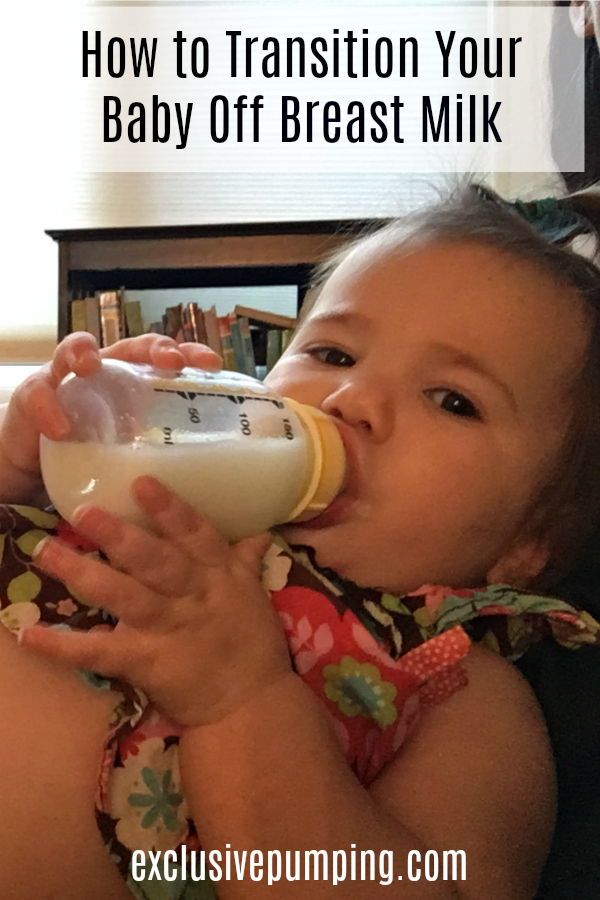
Maintain optimal temperature
Your baby will be more willing to eat expressed milk if the temperature is around 37°C, close to body temperature.
Dip the nipple in milk
Try dipping the nipple in expressed milk before offering it to your baby. This way it will taste and smell like your breast milk. Lightly touch the baby's upper lip with the nipple to open the mouth.
Choose the right position for bottle feeding
Feed your baby on demand and keep him reclining during feeding. Never bottle feed your baby when he is lying or sitting, otherwise he may choke. Listen to the wishes of the child - take as many pauses as he needs. You can even try to shift it from one hand to another during feeding.
Be patient
Don't worry if your baby doesn't take the bottle right away - it may take several tries. If he pushes the bottle away or starts crying, calm him down, wait a few minutes and try again. If he still doesn't want to bottle feed, wait a few more minutes and breastfeed him as usual. Repeat the bottle experiment at a different time of day.
If he still doesn't want to bottle feed, wait a few more minutes and breastfeed him as usual. Repeat the bottle experiment at a different time of day.
How much pumped milk should I give my baby?
All children are different. Research shows that between the ages of one and six months, a baby can consume between 50 and 230 ml of milk per feeding. To start, prepare about 60 ml and observe how much your baby needs - more or less. You will soon realize how much milk he usually eats. Just never force him to finish the cooked portion.
How can I keep my baby safe when bottle feeding?
Always clean and sterilize your pump and bottles according to the manufacturer's instructions. Wash your hands before expressing, pouring milk, and feeding your baby. Follow our instructions for safely storing and thawing your expressed milk.
If breastmilk needs to be warmed, place the bottle or bag in a bowl of warm water or a heater or under running water at a maximum of 37°C. Never heat breast milk in the microwave or on the stove.
Never heat breast milk in the microwave or on the stove.
Will the baby be able to transition from breast to bottle?
Some mothers worry that if they start bottle feeding too early, the baby will get used to the artificial nipple and not want to breastfeed. Others, on the contrary, are worried that if the child is not immediately accustomed to the bottle, then he will no longer eat from it. In general, in these cases, they say that the child confuses the nipple with the breast.
Experts disagree on whether such confusion is a problem. 1 Without a doubt, it is easier for a baby to suckle milk from a regular bottle with a nipple, which does not require a vacuum, than from the breast, since the milk flows faster, also under the influence of gravity. And some babies really have clear preferences: only the breast or only the nipple. However, many babies are comfortable suckling both the breast and the pacifier.
If you are unable to feed your baby with expressed breast milk, seek help from a lactation consultant or specialist.
Literature
1 Zimmerman E, Thompson K. Clarifying nipple confusion. J. Perinatol. 2015;35(11):895-899. - Zimmerman I., Thompson K., "On the issue of breastfeeding." Zh Perinatol (Journal of Perinatology). 2015;35(11):895-899.
2 Geddes DT et al. Tongue movement and intra-oral vacuum of term infants during breastfeeding and feeding from an experimental teat that released milk under vacuum only. Early Hum Dev . 2012;88(6):443-449. - Geddes D.T. et al., "Language Movements and Oral Vacuum Generation in Term Infants During Breastfeeding and Feeding from an Experimental Vacuum-Delivery Teat". Airlie Hume Dev. 2012;88(6):443-449.
3 Segami Y et al. Perioral movements and sucking pattern during bottle feeding with a novel, experimental teat are similar to breastfeeding. J. Perinatol. 2013;33(4):319-323. - Segami I. et al. , "Perioral movements and sucking during bottle feeding with a new experimental nipple are very similar to sucking from the breast." Zh Perinatol (Journal of Perinatology). 2013;33(4):319-323.
, "Perioral movements and sucking during bottle feeding with a new experimental nipple are very similar to sucking from the breast." Zh Perinatol (Journal of Perinatology). 2013;33(4):319-323.
4 Sakalidis VS et al. Oxygen saturation and suck-swallow-breathe coordination of term infants during breastfeeding and feeding from a teat releasing milk only with vacuum. Int J Pediatr. 2012;2012:130769. - Sakalidis V.S. et al., "Oxygenation and Coordination of Sucking, Swallowing, and Breathing in the Term Infant During Breastfeeding and Feeding from a Purely Vacuum Teat". Int J Pediatrician 2012;2012:130769.
Read instructions before use. Consult a specialist about possible contraindications.
* RC № ФСЗ 2010/07353 of 07/19/2010
Storage, freezing and thawing of breast milk
Expressed breast milk is the best food for your baby when you are not around. How to store and use breast milk correctly?
Share this information
If you go to work, go to the gym or simply ask your partner to feed your baby and you want to get some sleep yourself, you can express breast milk so that the baby can eat even when you are not around. Most of the beneficial properties are retained in expressed breast milk, so if you are forced to skip breastfeeding, it will be a better replacement than any formula. But an important guarantee of the safety of expressed milk for your baby is hygiene. Read the article to learn how to properly store breast milk.
Most of the beneficial properties are retained in expressed breast milk, so if you are forced to skip breastfeeding, it will be a better replacement than any formula. But an important guarantee of the safety of expressed milk for your baby is hygiene. Read the article to learn how to properly store breast milk.
What is the best way to store breast milk?
Any type of breast milk is better for the baby than formula. But freshly expressed breast milk is better than chilled, and chilled breast milk is better than frozen. The fact is that freshly expressed milk fights bacteria better, it contains more antioxidants, vitamins and fats than chilled or frozen milk 4 .
How long expressed breast milk lasts
Once your breast milk is properly collected in a clean container, you can store it at room temperature, in the refrigerator or in the freezer, depending on how soon you plan to use it. Follow the guidelines below:
Recommendations for storing expressed breast milk (for feeding healthy term babies) 2, 3
| Storage location | Room temperature | Refrigerator | Freezer | Pre-frozen |
| Safe shelf life | Up to four hours Up to six hours for milk expressed under extra clean conditions* | Up to three days Up to five days for milk expressed under extra clean conditions* | Up to six months Up to nine months for milk expressed under extra clean conditions* | Up to two hours at room temperature Up to 24 hours refrigerated Do not freeze again! |
* "Very clean environment" refers to strict adherence to the instructions in the article on cleaning and sterilizing the Medela 9 breast pump0104 . These instructions for storing and thawing breast milk are guidelines only. For more information, contact a lactation consultant or healthcare professional.
These instructions for storing and thawing breast milk are guidelines only. For more information, contact a lactation consultant or healthcare professional.
If the baby is in the neonatal intensive care unit (NIU) or intensive care unit, stricter cleaning and storage guidelines may apply in accordance with the hospital's internal policies.
Before placing expressed milk in the refrigerator or freezer, be sure to mark the bottles or bags with the amount of milk and the date of expression. This will make it easier to manage your pumped milk supply.
Recommendations for feeding expressed breast milk
During storage, breast milk usually separates into layers and the fats (cream) it contains rise to the top. Shake the bottle lightly to mix the layers before giving it to your baby. Strong mixing and shaking can destroy some of the nutritional and protective components of breast milk 5 .
When a baby is fed expressed breast milk from a cup or bottle, bacteria from the mouth naturally enters the milk. Therefore, it is best to throw out all the unfinished milk one to two hours after the first feeding. In order to waste as little expressed milk as possible, it is best to store it in small portions and use just enough for one feeding 2 .
Therefore, it is best to throw out all the unfinished milk one to two hours after the first feeding. In order to waste as little expressed milk as possible, it is best to store it in small portions and use just enough for one feeding 2 .
How to Store Breast Milk in the Refrigerator
2, 3Follow the guidelines below to safely store expressed milk in the refrigerator.
- Refrigerate breast milk as soon as possible after pumping.
- Store milk in clean BPA-free breast milk bottles or breast milk storage bags. Its long-term effects on the human body are not well understood and manufacturers are now moving away from the use of this chemical in plastic containers and covers.
- After pre-cooling, a small amount of expressed milk can be added to the milk container stored in the refrigerator. Do not add warm breast milk to already chilled milk.
- Store breast milk in the coldest part of the refrigerator, on the back of the shelf above the vegetable drawer.
 Do not store milk in the refrigerator door where the temperature is not as constant.
Do not store milk in the refrigerator door where the temperature is not as constant.
How to store breast milk in the freezer
2, 3The following are guidelines for the safe freezing of breast milk.
- Freeze breast milk as soon as possible after pumping.
- After pre-cooling, expressed milk can be added to the already frozen milk container. Do not add warm breast milk to already frozen milk.
- To simplify defrosting and reduce waste, store milk in small portions (less than 60 ml). Once thawed, portions can be mixed.
- Make sure the breast milk container is suitable for freezing: some containers (eg glass bottles) may burst at low temperatures. Medela Breast Milk Storage Bags are ideal for storing frozen breast milk: they are ready to use, cold-resistant and easy to label.
- Do not fill bottles or bags more than 3/4 full as milk expands when frozen.
- Store frozen breast milk in the back of the freezer where the temperature is constant.
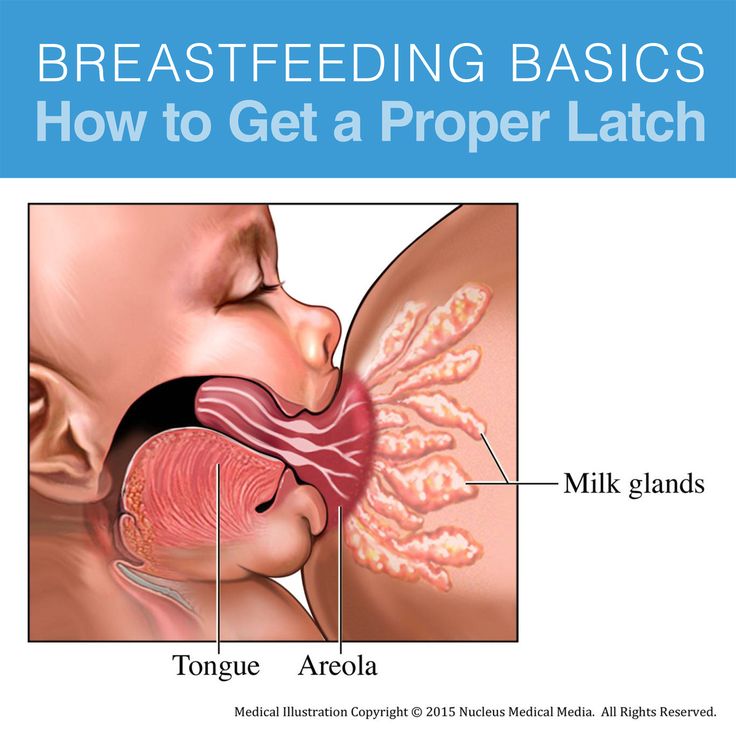 Do not place it against the walls of freezers with automatic defrosting.
Do not place it against the walls of freezers with automatic defrosting.
Feeding frozen breast milk
2, 3Follow these guidelines when thawing breast milk to keep it safe for your baby.
- Breast milk can be thawed in the refrigerator, usually takes about 12 hours. You can place the bottle or bag of frozen milk under running warm water (max. 37 °C). Do not thaw breast milk at room temperature.
- Fully thawed breast milk can be stored for up to two hours at room temperature and up to 24 hours in the refrigerator.
- Do not thaw or reheat frozen breast milk in a microwave oven or in boiling water. This can negatively affect the nutritional and protective properties of breast milk, and due to uneven heating, the baby can burn.
- If, after defrosting, you left breast milk at room temperature, but did not feed it to the baby within two hours, the milk must be discarded.
- Do not refreeze breast milk.
How to warm up expressed breast milk
2, 3 Healthy full-term babies can be given breast milk at room temperature or heated to body temperature. Some children care about the temperature of the milk, while others drink milk at any temperature.
Some children care about the temperature of the milk, while others drink milk at any temperature.
- To warm breast milk, place the bottle or bag in a cup, mug or bowl of warm water for a few minutes until the milk is at body temperature (37°C). You can use a bottle warmer. Do not heat milk above 40°C or microwave it to avoid overheating.
- Slightly shake the milk in the bottle or bag to mix the separated fat (see above). Do not stir or shake the milk too hard.
Why does milk smell strange after storage?
Chilled or thawed breast milk may smell different from fresh
. This is due to the action of lipase, an enzyme that breaks down fats into fatty acids, preventing the growth of dangerous bacteria.
Some mothers report that their milk smells rancid or soapy after storage. But if you followed all the recommendations for safe storage given in this article, such milk is absolutely safe 2 .
Storing breastmilk on the road
If you need to transport your breastmilk from work to home or nursery, use the cool bag with ice packs 2 . For more information on pumping and storing breastmilk on the go, see the article on pumping on the go.
For more information on pumping and storing breastmilk on the go, see the article on pumping on the go.
Literature
1 US Food & Drug Administration. Using a breast pump. [Internet]. Silver Spring, MD, USA: US Department of Health and Human Services; 2018 [updated 2018 Feb 04; cited 2018 Apr 12] Available from: www.fda.gov/MedicalDevices/ProductsandMedicalProcedures/HomeHealthandConsumer/ConsumerProducts/BreastPumps/ucm061944.htm. "Instructions for using the breast pump". [Internet] Silver Spring, Maryland, USA: Department of Health and Human Services; 2018 [updated February 4, 2018; cited April 12, 2018] Article referenced: www.fda.gov/MedicalDevices/ProductsandMedicalProcedures/HomeHealthandConsumer/ConsumerProducts/BreastPumps/ucm061944.htm
3 Eglash,A., Simon,L., & The Academy of Breastfeeding Medicine. ABM clinical protocol #8: human milk storage information for home use for full-term infants, revised 2017.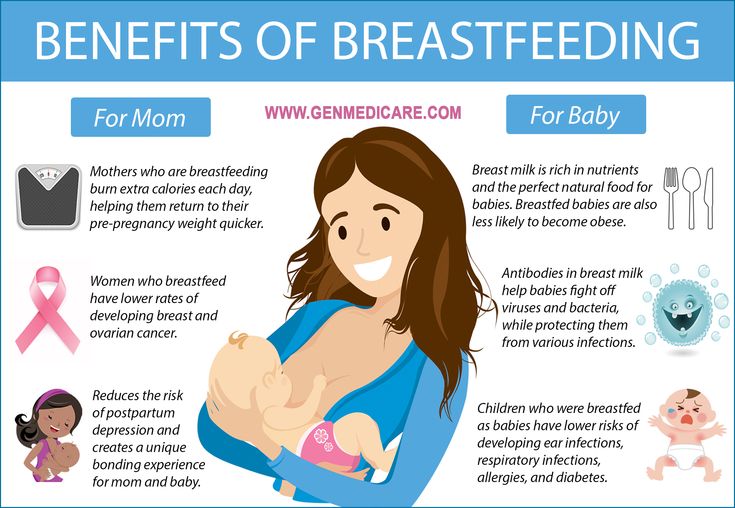 Breastfeed Med 12, (2017). - Eglash A, Simon L and Academy of Breastfeeding Medicine, AVM Clinical Protocol #8: Home Storage of Milk for Term Infants 2017 Revision. Brestfeed Med (Breastfeeding Medicine) 12 (2917).
Breastfeed Med 12, (2017). - Eglash A, Simon L and Academy of Breastfeeding Medicine, AVM Clinical Protocol #8: Home Storage of Milk for Term Infants 2017 Revision. Brestfeed Med (Breastfeeding Medicine) 12 (2917).
4 Human Milk Banking Association of North America. 2011 Best practice for expressing, storing and handling human milk in hospitals, homes, and child care settings. (HMBANA, Fort Worth, 2011).- North American Breast Milk Banks Association. Fort Worth: SABGM; 2011.
5 García-Lara NR et al. Effect of freezing time on macronutrients and energy content of breastmilk. Breastfeeding Medicine. 2012;7(4):295-301. - Garcia-Lara N.R. et al., "Effect of Freezing Duration on Macronutrients and Energy in Breast Milk". Brestfeeding Honey (Breastfeeding Medicine) . 2012;7(4):295-301.
6 Office on Women’s Health.











